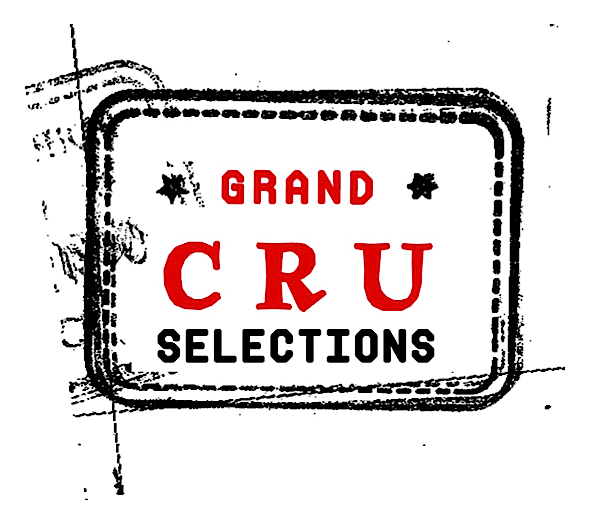Wenzlau Vineyard Current Releases
Pinot Noir Estate Santa Rita Hills
The Site: Planted on Tierra loam soils as well as diatomaceous outcroppings (lots of crushed sea shells), this very west slope gets pounded by the onshore flow coming off the Pacific. The struggle these vines endure to send their roots deep into the signature Sta. Rita Hills dense black clay soil to steady themselves against the constant wind from this elevated plot give the fruit’s juice added complexity.
Winemaking: The wine saw about 30% new French oak, racked off lees after 14 months in barrel, blended, and back down to barrel for an additional 4 months of cellaring before being bottled and put to sleep for 6 months. Predominately from clones 115 and 667, with a smaller amount of 2A there is about 20% whole cluster in the finished wine. No acidification. No chaptalization.
Pinot Noir Perch Santa Rita Hills
The Site: Organically Farmed on a tiny parcel on the southwestern corner of the vineyard, the vines cling to the edge of a dramatic 450’ windswept cliff. Single vineyard, single block, single clone (2A), this special cuvée is planted on Linne clay loam soils. The wine defies its rugged existence with a feminine purity, elegance and minerality.
Winemaking: After 14 days of fermentation, the grapes were pressed to barrel. The wine saw about 40% new French oak, racked off lees after 14 months in barrel, blended, and back down to barrel for an additional 4 months of cellaring before being bottled and put to sleep for 6 months. 50% stem inclusion. Small, dark, and powerful clusters. No acidification. No chaptalization.
Pinot Noir Drawing Board Santa Rita Hills
The Site: Organically farmed, the vines are planted on tierra loam soils as well as diatomaceous outcroppings (lots of crushed sea shells, black clay and broken river rocks). This elevated, southwest slope gets pounded by the onshore flow coming off the Pacific Ocean. The vines send their roots deep into this signature Sta. Rita Hills dense, microbial black clay soil to steady themselves against the constant beating of the sea breeze. It is this condition that gives the fruit’s juice added boldness and complexity.
Winemaking: The berries were picked before first light and came into the cellar cool, dark & juicy. The wine blends all blocks from our Estate vineyard, as well as grapes from our older vines on our acre on Mt. Carmel. The grapes were pressed to barrel after 10-14 days fermenting in the cellar with about 15% whole stem inclusion in the finished wine. The wine spent 18 months in barrels, about 20% new French Oak. No fining, no filtration, no chaptalization.
Pinot Noir Mt. Carmel Santa Rita Hills
The Site: Single vineyard, single block, single clone (667), this bottling is from our single acre across the canyon and is part of the famed Mt. Carmel site, where the 2nd oldest vines in the Sta. Rita Hills are planted. It is a breezy, south facing plot where the old vines' feet grip the dark, diatomaceous clay and produce dark, brooding clusters.
Winemaking: After about 18 days of fermentation in open vats, the grapes were pressed to barrel. The dark, powerful small clusters allowed us to add stems this year and, in a big way, about 50%. The wine saw about 30% new French oak, racked off lees after 14 months in barrel, blended, and back down to barrel for an additional 4 months of cellaring before being bottled and put to sleep for 6 months. No acidification. No chaptalization.
Chardonnay Estate Santa Rita Hills
The Site: The cool climate on the banks of the Santa Ynez River gets a generous blanket of fog each night, which allows the grapes to ripen slowly, keeping a nice acidity to balance the wine. The vines struggle to push through rocky, silty soil, so there is the signature minerality, which is balanced and layered with floral, honey and stone fruit notes.
Winemaking: The wine saw 14 months in mostly neutral French barrels, on the lees the whole time and went through full malo. It was then racked to stainless steel tank for an additional 4 months prior to bottling and put to sleep these past 6 months. There is about 18-‐‑20% new French oak in the finished wine. There was no acidification or chaptalization.
Chardonnay Drawing Board Santa Rita Hills
In 2014, with these young vines in their 3rd year fruit from the acre of Viognier grafted over in 2012, the Wenzlaus continued to isolate the fruit in order to study its development as the vines matured. As is typical of this riverfront site, the minerality is ever-‐‑present from the sandy, loam soil. There are 3 clones, 4, 15 & 76. All are planted on Riparia rootstock.
Whole clusters were pressed to tank, quickly settled and racked to a second tank. Once active, the fermenting juice was transferred to barrels, about 10% new French Oak. All lots went through full malo. It rested on lees for 15 months before being racked back to stainless steel tank for an additional 3 months prior to bottling February 2016. No filtration, no fining, no acidification or chaptalization.
